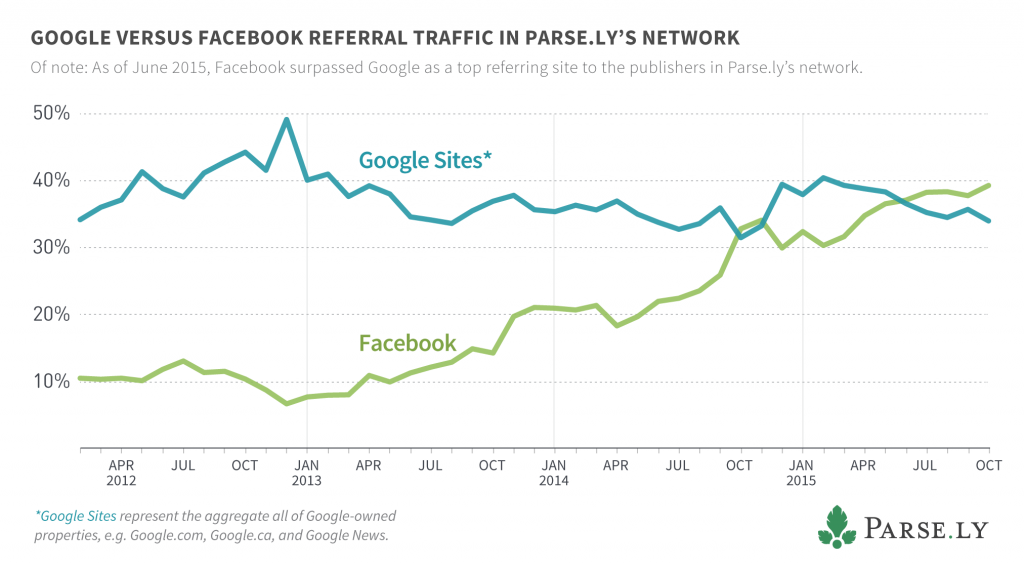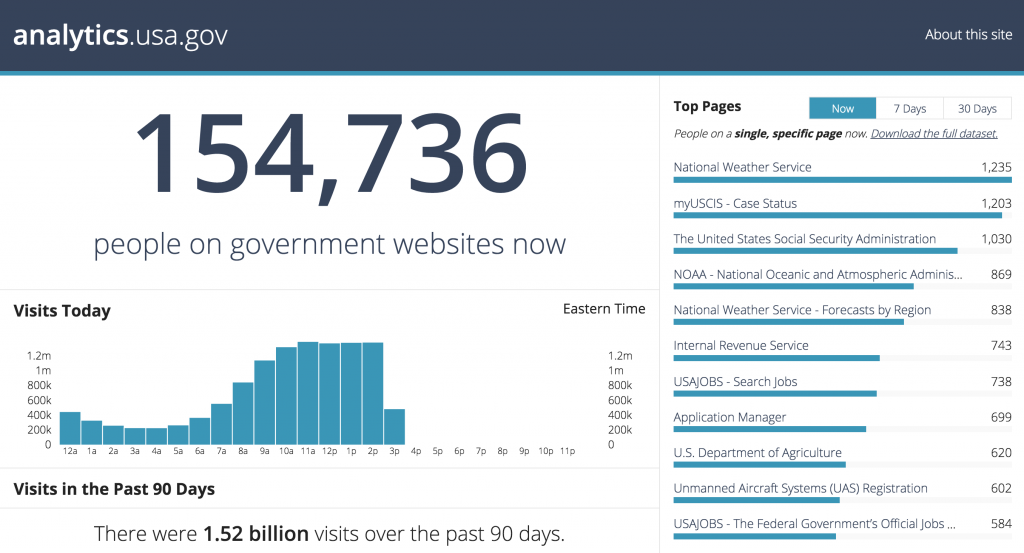The past year saw some pretty revolutionary advances to how we publish and share content. The numbers have shown us that more and more, readers are ditching their desktops in favor of mobile devices and fewer of us are waiting around for slideshows to load.
We know what the numbers are saying because the tools and resources that allow us to track our content are growing in quantity and quality as we speak.
Let’s take a look back at 2015 and glean some insight into what’s in store for 2016 in the ever-growing arena of web analytics.
Google AMP
Looking back:
Google has been busy this year. In addition to celebrating the 10th birthday of their beloved analytics platform, they’ve also announced a couple of very interesting features.
In October, Google let the world know about Accelerated Mobile Pages. AMP, as it’s called, will allow anyone who publishes content to the Internet the ability to serve their content to mobile users at lightning fast speeds. Faster content, better Google ranking.
Looking forward:
All of us can look forward to using and experiencing AMP as early as February 2016. In the meantime, check out their GitHub documentation.
Speed and mobility
Looking back:
Research from Pew shows that 39 of the top 50 news sites now get more traffic from mobile than desktop, which might explain the increase in concern about the user’s mobile experience.
In addition to Google’s AMP, Facebook released Instant Articles, which allows organizations to upload entire stories, and users to read them, without leaving the Facebook site.
Looking forward:
In order to keep up in the race for speed and lasso this ever-growing number of mobile readers, we’re going to see more changes in the ways that publishers serve up their content. However, while fast content may attract and sustain new readers, tracking analytics across platforms will likely become a bigger issue.
The government
Looking back:
The government showed us their analytics this year with the launch of analytics.usa.gov. Though the government has a long history of obscuring data and internal processes, they have noticeably been pulling back their digital curtain with projects like this and others developed by 18F, a group formed in 2014 with the aim of simplifying government services.
Looking forward:
18F is now a 100+ member team and growing all the time. I think that we can anticipate the continued modernization of the government’s online practices and hopefully the release of even more behind-the-scenes data.
NewsLynx
Looking back:
NewsLynx, developed by Michael Keller and Brian Abelson and launched in June, is an open source platform that lets you automate metrics collection, record real-world analytics events, and combine data to more completely measure impact.
Looking forward:
With the burden of manually collecting and aggregating analytics off their shoulders, I think we can expect to see faster growth and more innovation in user engagement from NewsLynx users.
Google Calculated Metrics
Looking back:
Previously, the only way to get at custom analytics was to download your data, pull it into a spreadsheet and write your own formulas and calculations. Enter Calculated Metrics. Calculated Metrics allows you to combine existing Google Analytics (GA) metrics with formulas right in the GA platform.
Looking forward:
Giving users more control over their data and content seems to be a trend that Google is riding hard. It will be interesting to see the moves Google makes in 2016 to put more control in the hands of its online publishing users.
The Coral Project
Looking back:
In 2014, The Coral Project began building out their idea that online commenting can be more than just trolling and complaining; it can be about growing audiences and measuring impact. In 2015, they have been concentrating on hiring talented people, developing ideas and writing about their progress.
Looking forward:
Next year, I think we can expect to see The Coral Project start rolling out some of the engagement and impact tools that they’re developing. They’ll be open source, built for organizations small and large, so stay tuned.
Social over search
Looking back:
An October 2015 Authority Report from Parsely shows that more people found their news using Facebook than the previous referral giant, Google.
Looking forward:
When trends arise, the immediate question to be answered is: why? Keep an eye out for new ways to measure and act on social media user data. It’s certainly an audience you’ll want to understand.

Graphic by Parsley.
DataKind
Looking back:
The Knight Foundation has also renewed its funding of DataKind, an organization that helps match non-profits with pro bono data scientists. The hope is that together, they can use data to better impact communities in need.
Looking forward:
With this renewed funding I think we can expect to see even more world-changing projects like these.
BuzzFeed and video
Looking back:
In March, BuzzFeed’s original video arm, BuzzFeed Motion Pictures, announced that they had just reached 1 billion monthly views on their videos.
Looking forward:
It’s pretty exciting news for BuzzFeed, but also a pretty good indicator to the rest of us that people want video content. I think we can look forward to some experimentation with video content in 2016.
MetricShift
Looking back:
MediaShift has long brought you in-depth coverage of how digital media is changing, with reporting, weekly podcasts and online trainings.
Looking forward:
And now we’re happy to announce that we’ll be expanding our coverage area to include topics of metrics, analytics and measuring impact. So keep an eye out of our new MetricShift section coming early next year!
This post originally appeared on IJNet partner MediaShift. It is published on IJNet with permission. Alexandra Kanik is the Metrics Editor/Curator for MediaShift.
MediaShift tells stories of how the shifting media landscape is changing the way we get our news and information. MediaShift correspondents explain how traditional media such as newspapers, magazines, radio, TV, music and movies are dealing with digital disruption and adapting their business models for a more mobile, networked world. Learn more at MediaShift on the web, follow MediaShift on Twitter or on Facebook.
Image CC-licensed on Flickr via Stefanos Kofopoulos.



